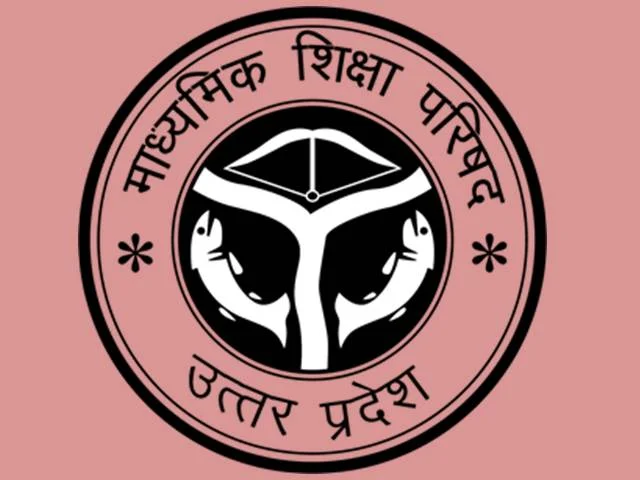CBSE Class 12 Biology Syllabus 2024-25

Biology is an extremely important subject especially for the students who are going to appear for the CBSE board exam with science stream. It is considered a very tough subject that requires good preparation from the candidates. It is crucial to know the CBSE 12 Class Biology syllabus 2024 if you are preparing for the exam. This will help you in making a proper strategy to clear the board exam with flying colors. Additionally, the CBSE Class 12 Biology syllabus 2024 is also very important for various medical entrance exams in the country like NEET, AIIMS MBBS, etc. The complete details regarding the CBSE class 12 syllabus for Biology are provided in this article.
CBSE Class 12 Biology Syllabus 2024-25
The unit-wise marking scheme along with the allotted periods is mentioned in the table below:
Unit-VI Reproduction
Chapter-2: Sexual Reproduction in Flowering Plants
Flower structure; development of male and female gametophytes; pollination – types, agencies and examples; out breeding devices; pollen-pistil interaction; double fertilization; post fertilization events – development of endosperm and embryo, development of seed and formation of fruit; special modes- apomixis, parthenocarpy, polyembryony; Significance of seed dispersal and fruit formation.
Chapter-3: Human Reproduction
Male and female reproductive systems; microscopic anatomy of testis and ovary; gametogenesis-spermatogenesis and oogenesis; menstrual cycle; fertilisation, embryo development upto blastocyst formation, implantation; pregnancy and placenta formation (elementary idea); parturition (elementary idea); lactation (elementary idea).
Chapter-4: Reproductive Health
Need for reproductive health and prevention of Sexually Transmitted Diseases (STDs); birth control – need and methods, contraception and medical termination of pregnancy (MTP); amniocentesis; infertility and assisted reproductive technologies – IVF, ZIFT, GIFT (elementary idea for general awareness).
Unit-VII Genetics and Evolution
Chapter-5: Principles of Inheritance and Variation
Heredity and variation: Mendelian inheritance; deviations from Mendelism – incomplete dominance, co-dominance, multiple alleles and inheritance of blood groups, pleiotropy; elementary idea of polygenic inheritance; chromosome theory of inheritance; chromosomes and genes; Sex determination – in humans, birds and honey bee; linkage and crossing over; sex linked inheritance – haemophilia, colour blindness; Mendelian disorders in humans – thalassemia; chromosomal disorders in humans; Down’s syndrome, Turner’s and Klinefelter’s syndromes.
Chapter-6: Molecular Basis of Inheritance
Search for genetic material and DNA as genetic material; Structure of DNA and RNA; DNA packaging; DNA replication; Central Dogma; transcription, genetic code, translation; gene expression and regulation – lac operon; Genome, Human and rice genome projects; DNA fingerprinting.
Chapter-7: Evolution
Origin of life; biological evolution and evidences for biological evolution (paleontology, comparative anatomy, embryology and molecular evidences); Darwin’s contribution, modern synthetic theory of evolution; mechanism of evolution – variation (mutation and recombination) and natural selection with examples, types of natural selection; Gene flow and genetic drift; Hardy – Weinberg’s principle; adaptive radiation; human evolution.
Top Online Learning Apps in India
Unit-VIII Biology and Human Welfare
Chapter-8: Human Health and Diseases
Pathogens; parasites causing human diseases (malaria, dengue, chikungunya, filariasis, ascariasis, typhoid, pneumonia, common cold, amoebiasis, ring worm) and their control; Basic concepts of immunology – vaccines; cancer, HIV and AIDS; Adolescence – drug and alcohol abuse.
Chapter-10: Microbes in Human Welfare
Microbes in food processing, industrial production, sewage treatment, energy generation and microbes as bio-control agents and bio-fertilizers. Antibiotics; production and judicious use.
Unit-IX Biotechnology and its Applications
Chapter-11: Biotechnology – Principles and Processes Genetic Engineering (Recombinant DNA Technology).
Chapter-12: Biotechnology and its Applications
Application of biotechnology in health and agriculture: Human insulin and vaccine production, stem cell technology, gene therapy; genetically modified organisms – Bt crops; transgenic animals; biosafety issues, biopiracy and patents.
Unit-X Ecology and Environment
Chapter-13: Organisms and Populations
Population interactions – mutualism, competition, predation, parasitism; population attributes – growth, birth rate and death rate, age distribution. (Topics excluded: Organism and its Environment, Major Aboitic Factors, Responses to Abioitic Factors, Adaptations)
Chapter-14: Ecosystem
Ecosystems: Patterns, components; productivity and decomposition; energy flow; pyramids of number, biomass, energy (Topics excluded: Ecological Succession and Nutrient Cycles)
Chapter-15: Biodiversity and its Conservation
Biodiversity-Concept, patterns, importance; loss of biodiversity; biodiversity conservation; hotspots, endangered organisms, extinction, Red Data Book, Sacred Groves, biosphere reserves, national parks, wildlife, sanctuaries and Ramsar sites.
10 Best Laptops For College Students
Practicals (Full List of Experiments)
A. List of Experiments
1. Prepare a temporary mount to observe pollen germination.
2. Study the plant population density by quadrat method.
3. Study the plant population frequency by quadrat method.
4. Prepare a temporary mount of onion root tip to study mitosis.
5. Isolate DNA from available plant material such as spinach, green pea seeds, papaya, etc.
B. Study and observer the following (Spotting):
1. Flowers adapted to pollination by different agencies (wind, insects, birds).
2. Pollen germination on stigma through a permanent slide or scanning electron micrograph.
3. Identification of stages of gamete development, i.e., T.S. of testis and T.S. of ovary through
permanent slides (from grasshopper/mice).
4. Meiosis in onion bud cell or grasshopper testis through permanent slides.
5. T.S. of blastula through permanent slides (Mammalian).
6. Mendelian inheritance using seeds of different colour/sizes of any plant.
7. Prepared pedigree charts of any one of the genetic traits such as rolling of tongue, blood
groups, ear lobes, widow’s peak and colour blindness.
8. Controlled pollination – emasculation, tagging andbagging.
9. Common disease causing organisms like Ascaris, Entamoeba, Plasmodium, any fungus causing ringworm through permanent slides, models or virtual images or specimens. Comment on symptoms of diseases that they cause.
10. Models specimen showing symbolic association in root modules of leguminous plants, Cuscuta on host, lichens.
11. Flash cards models showing examples of homologous and analogous organs.
Prescribed Books
1. Biology, Class-XII, Published by NCERT
2. Other related books and manuals brought out by NCERT (consider multimedia also)
3. Biology Supplementary Material (Revised). Available on CBSE website
Check CBSE New Biology Syllabus for Class 12th: Download
Also Check
CBSE Class 12th Syllabus (All Subjects)




Chapter 1 9 and 16 deleted he kya??
Where is chemistry syllabus
Please follow the link provided for CBSE class 12 whole subject syllabus.
Yes
First chapter deleted ?
Yes!
Can you pls share exam pattern of term and term2
Is the first chapter deleted
i want syllabus 2022-23
First chapter deleted h kya
Yeah
all bayo books
12 biology syllabus 2020-21